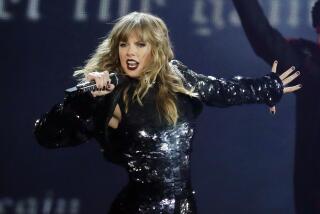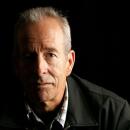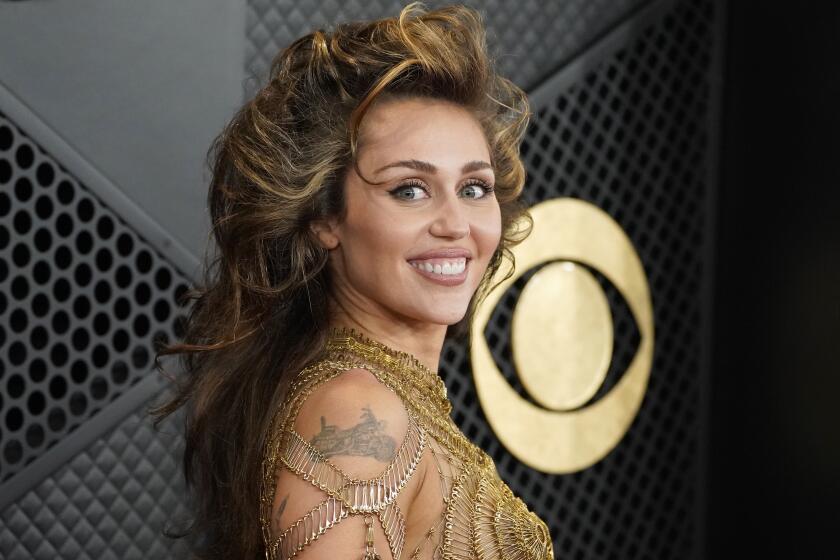How does Taylor Swift connect with fans? ‘Secret sessions’ and media blitzes
They came from Bakersfield, San Diego, Long Beach and elsewhere across the Southland, about three dozen young women plus a handful of young men who had caught the eye of the gathering’s host with posts about her on Twitter, Instagram, Tumblr and other social media sites.
Enticed by vague invitations to be part of “an amazing opportunity,” they were shuttled in luxury vans through the winding roads above Beverly Hills on a recent Saturday afternoon to a two-story mansion where they noshed on pizza and other snacks before being invited into the warmly appointed living room.
Just moments after they’d settled into couches, chairs and nine overstuffed pillows scattered across a large Persian rug, arguably the biggest pop star on the planet popped through a doorway, a fluffy white kitten clutched to her chest.
“Hey, guys,” Taylor Swift said to screams of delight.
A few minutes later, Swift explained how her guests had been selected based on comments they had posted on social media sites.
“You guys have been individually hand-picked — by mostly me,” she said. “I’m obsessed with Twitter and Instagram and Tumblr. Why I wanted to have you here at this secret session is to play the entire new album for you.”
It was the first of several of Swift’s “secret sessions” during which she personally previewed her fifth studio album, “1989,” for groups of fans ahead of the album’s release on Monday (others were held at her homes in Nashville, New York and Rhode Island).
That’s a major departure from the veil of secrecy surrounding her two previous blockbuster albums, “Speak Now” in 2010 and “Red” in 2012, both of which defied the music industry’s downward trajectory of recent years by selling more than a million copies each in their first week of release.
One reason for these fan listening sessions was to ensure her audience stays with her as she continues her transition from country star to pop.
Starting in the mid-2000s working her MySpace page relentlessly, she’s done the same with other social media platforms to establish a Permabond-like connection with fans over the last eight years.
The big question facing “1989” is whether Swift will be able to strike platinum a third time. Billboard projections are putting first-week sales in the 800,000 neighborhood, which in the ever-shrinking world of music sales is still a rare achievement. So far, no album released in 2014 has sold more than 1 million copies, and the biggest first-week sales figure this year came in May with Coldplay’s “Ghost Stories,” which sold just under 383,000 copies.
Swift is always cognizant of the business side of her career and is well into a media blitz supporting her latest collection with appearances last week on “Jimmy Kimmel Live!,” two drop-ins to ABC’s Good Morning America” on Monday and this Thursday, and a visit to NBC’s “The Voice” on Monday. In between she’s showing up on “The View” on Wednesday, and she’ll be omnipresent on the radio all this week as more than 900 iHeartRadio-affiliate pop stations across the country will carry programs spotlighting Swift and her new album.
The latter exposure may compensate for reduced airtime she’ll likely receive from country radio, where Swift established her career starting with the 2006 release of her debut album “Taylor Swift.” She has called “1989” her first “official pop album,” and much of it was created in collaboration with pop-R&B producer songwriters Max Martin and Shellback, Ryan Tedder and singer-songwriter Jack Antonoff of Fun.
“I think if you respect, admire and love a person — or in this case, a musical community — you’ll be honest with them and very upfront about what’s happening,” she said in reference to her continuing musical evolution. Wearing a creme-colored sweater, chunky heels and plaid mini-skirt, she added: “Looking back, I think when [her 2012 single] ‘I Knew You Were Trouble’ spent seven weeks at No. 1 on the [pop] singles chart, a lot of the world should have seen that as a warning flare. It showed that this part of my music is really working, and it’s something I’m really passionate about.
“I don’t think the country music community was shocked that I made a pop album,” she added. “I think they were shocked that I was honest with them about it.
“There was this huge fear that they may be about to hear an album from me that sounded alien to them,” she said, shifting into a sing-song delivery as she added, “like I’d be singing ‘Dance, dance, dance in the club, club, club and the beat drops.’”
Swift’s transformation from precocious teenage country-pop singer and songwriter into a full-blown pop star, which began in earnest on “Red,” is fully realized in “1989.” New songs burst with hooks and with choruses so catchy the living room audience began singing along before some songs ended.
Halfway through the Beverly Hills listening session, 21-year-old Cal State Bakersfield student Marisel Maldonado said “she’s describing my life right now …. I’ve been a fan since I was 14. She’s never disappointed me.”
At the end of the fifth song, a propulsive number in which Swift exhorts a departing lover to stay, another young woman wiped a tear and confessed: “We’ve all gone through it!”
Swift, in a conspiratorial girl-to-girl tone, shot back: “We’ll talk later.”
One of the brilliant aspects of Taylor Swift’s rise to pop stardom is the way she’s managed to convince millions of fans, the majority of whom are women her age or younger, that she’s one of them.
It’s central to the message of her new album’s first single, “Shake It Off.” The song’s Mark Romanek-directed video paints Swift as out of her element in various clichéd, pop video settings: as a dysfunctional Lady Gaga-esque performance artist; trapped in a Miley Cyrus-like twerk-off; flailing as a ballerina — only to find her mojo working as part of a group of ordinary people — non-professional actors that Swift again helped select through social media. The video has racked up almost 200 million views in the matter of a few weeks.
“Shake It Off” echoes previous hits including “You Belong With Me” and “Mean”: At heart Swift identifies as a nerd — and a proud one at that — a stance that works in her favor as she strives to give voice in many of her songs to the unhip and socially awkward.
Never mind that Swift is a multimillion-selling recording artist who writes, performs and often produces monstrously successful hit singles and albums. She’s also one of the few pop culture figures who can score the cover of Elle, People and Rolling Stone magazines while presiding over a multimillion-dollar music empire.
“Taylor’s got many, many good things going for her,” said Tony Pace, chief marketing officer for Subway restaurants, one of several major corporate alliances Swift is exploiting to promote the new album. “She’s astute about social media and she’s a very serious and committed artist.”
To be sure, Swift has no shortage of haters. Her relatively thin voice is technically no match for powerhouses like Kelly Clarkson and Carrie Underwood, and anonymous Internet commenters toss out barbs for the perceived trail of A-list broken hearts she’s left behind (and perhaps tapped for songwriting inspiration), including musician John Mayer, actors Jake Gyllenhaal and Taylor Lautner, and One Direction heartthrob Harry Styles.
One of the new album’s sassiest tracks, “Blank Space,” was sparked by what was being written about her in the tabloids.
In the song, she brags that “I’ve got a long list of ex-lovers / They’ll all tell you I’m insane / Looking at that face / You look like my next mistake.”
“I pride myself on being self-aware,” she told her living-room audience. “But I’ve also noticed there’s this drastic fictionalization of my personal life in the press.
“They’ll write that I’m needy, that I push people away then pull them back,” she said. “I found all this fascinating. So I thought, ‘What if I were this girl — this damaged starlet thing? I’m going to write a song as if I were her.’
“I started writing [it] as a joke,” she said, “but it ended up being everyone’s favorite.”
Since her split with Styles last year, she said, “I’ve put dating absolutely out of my mind. There are a few reasons, the most important of which is protecting my own happiness and my own freedom.”
Additionally, she said, “if you have a problem with what’s being written about you, you always have the option to do something about it, and that’s what I’ve done.”
The unexpected result, she said, is not just a reduction in tabloid speculation about her love life but the change in her own need for romantic engagement.
“I don’t think I ever expected to feel this good about life without there being any element of romance in sight,” she said. “Now I find I’m very excited about life itself. Life can be romantic if you choose to look at it that way. Lonely doesn’t have to play into being alone.”
Besides, she’s well aware that at the drop of a hat she can fill her living room with 40 of the most supportive friends a pop star could want.
“I just knew I really wanted to do something different for this album,” she said, sitting on one of the picnic benches in her backyard just before the session. “We’ve got so much big, crazy stuff planned, I wanted to balance that by also doing something with more of a human connection.
“It’s really, really fun. It feels like a party, or a sleepover or something.”
Follow me on Twitter: @RandyLewis2
More to Read
The biggest entertainment stories
Get our big stories about Hollywood, film, television, music, arts, culture and more right in your inbox as soon as they publish.
You may occasionally receive promotional content from the Los Angeles Times.











